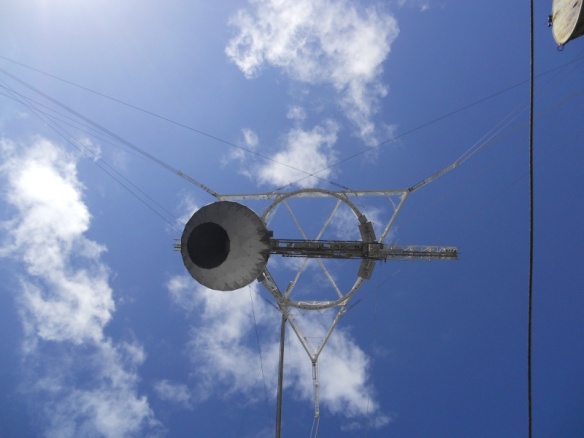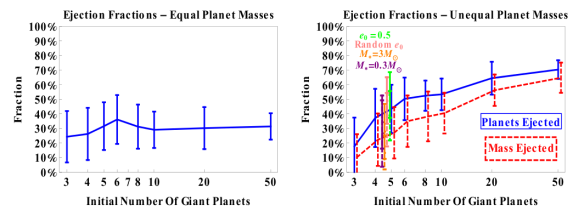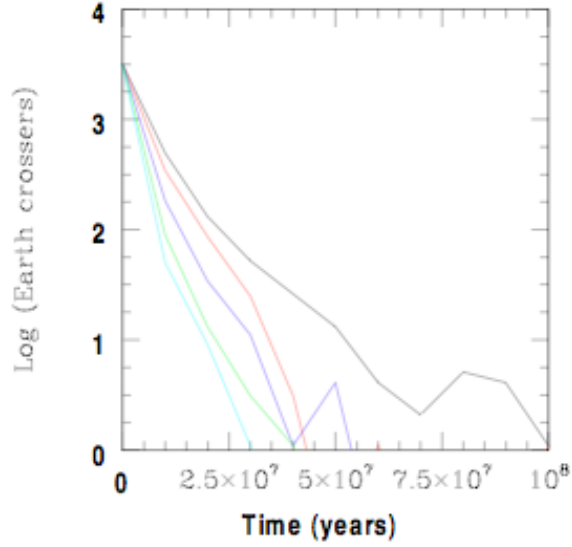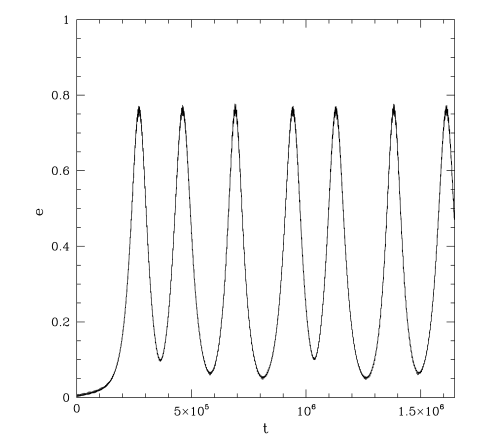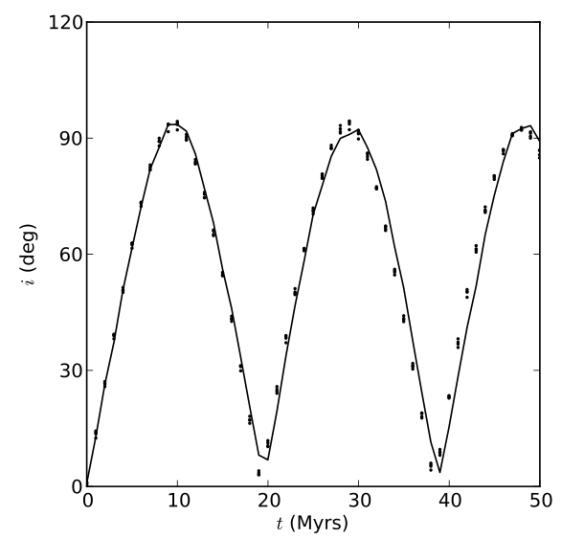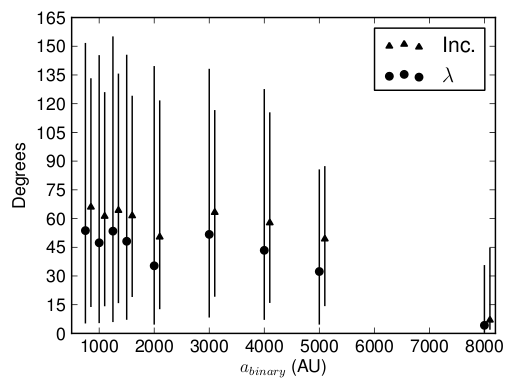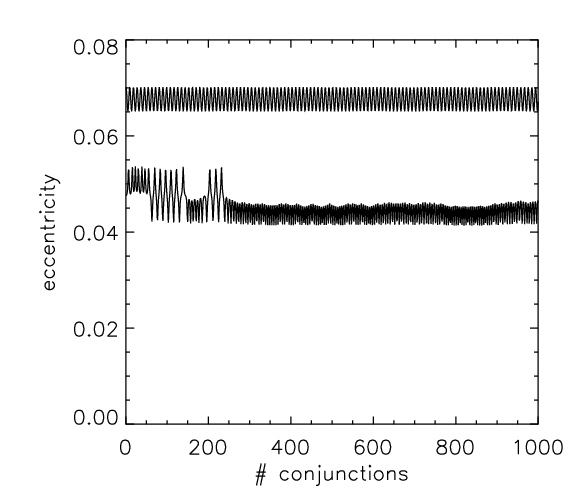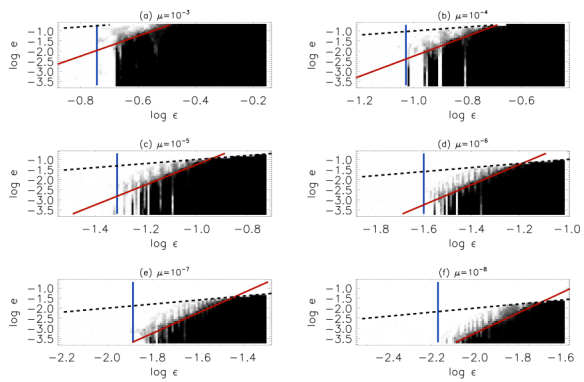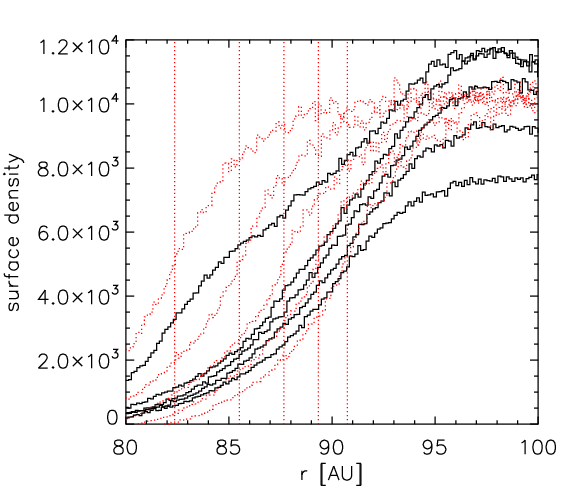The final day of the Planets around stellar remnants conference included some of the more interesting, but also more speculative, talks. Andre Maeder opened with a general talk on life in the universe, concerning whose existence he takes a somewhat pessimistic view. There are many obstacles that stand in the way of the evolution of life, and complex life in particular. One of these is the problem of timescales: although it took only a few hundred million years for bacteria to develop on Earth, it took around 1.5 billion each for eukarya (complex single-celled organisms such as amoebae) and multicellular life to evolve. (Although, as pointed out by Lynn Rothschild in the discussion after the talk, complex life may have arisen earlier but left no trace in the fossil record, and in the lab multicellularity can be bred through artificial selection in just a few months.) By this arguement, a star must live for several billion years in order for complex life to develop. Since higher mass stars have shorter lifetimes, any star more massive than about 1.2 Solar masses would probably not have a long enough lifetime for complex life to develop. Similar arguments make the development of life in habitable zones around evolved stars, as described by William Danchi earlier in the week, less likely. Low mass M-dwarfs, although they live for a long time, are also unsuitable, since planets with an average temperature suitable for life are likely to be tidally locked, presenting one face permanently to the star, resulting in a planet with one parched and one frozen hemisphere. Other obstacles include perturbations from other planets in the system, volcanic and asteroidal hazards, the existence or not of plate tectonics, lack of water, or too much water. Most of these were debated after the talk or later in the day. Since we have a sample size of one known life-bearing planet to work from, any generalisation can be seen as somewhat hasty.
Lynn Rothschild then spoke about extremophiles: organisms that can survive extreme environmental conditions. The existence of such beings on Earth is a reminder that we should not take too anthropocentric a view when evaluating the prospects for another planet’s hosting life. “Extreme” is of course a relative term, and we ourselves tolerate levels of oxygen (a highly reactive chemical) that would be death to many microbes. The easiest environmental quality to measure astrophysically is a planet’s temperature, and while the traditional “habitable zone” around a star is the region which gives a planet a surface temperature that allows liquid water to exist, known species can actually survive at between -40 and 120 degrees celsius. The range for complex life is narrower, however, and many extremophiles (such as the tardigrade arthropods) are actually only “extremo-tolerant”: they can survive extremes such as dessication, but are only metabolically active in more comfortable environments.
Eric Agol next decribed the habitable zone around white dwarfs. This is located very close to the star, at around 0.01 AU. Although the WD cools as it ages, the cooling is sufficiently slow that the habitable zone can remain habitable for several billion years, so life may have ample time to evolve. Although such a planet would be tidally locked to the star, the extremely short spin period would induce atmospheric currents that could warm the night side, hence distributing heat more evenly over the planet’s surface. Such planets should be easy to detect: because the WD is so small, a planet a little larger than Earth could block out 100% of the star’s light, similar to a Solar eclipse by the Moon. Quite how such a planet would form is another question: it would have to have survived the star’s giant evolution, and then been moved close to the star at a later time.
Lisa Kaltenegger the described the habitability of exoplanets in more detail. The criterion that liquid water must exist on the planet’s surface means that the planet’s temperature as calculated simply from black-body absorption of the star’s light must be about -100 to 0 degrees celsius: it is raised above zero by a combination of clouds and the greenhouse effect. On Earth, these raise the average temperature from about -10 to +14. Proper modelling of exoplanets’ atmospheres must take into account geological and biological models as well as simple atmospheric chemistry: on Earth, the carbonate–silicate cycle driven by plate tectonics regulates the level of atmospheric CO2 and prevents the greenhouse effect from becoming too severe. The study of terrestrial planet atmospheres will be difficult, but not impossible, although targets close to the Sun will be required: the Earth-sized planets so far found by Kepler are all too distant.
Abel Méndez next attempted to quantify habitability. Instead of being a simple there-is-life/there-is-no-life dichotomy, he borrowed measures from ecology such as the Habitat Suitability Index that evaluate ecosystem productivity compared to some optimum. Another metric he proposed was an Earth Similarity Index, combining not just temperature but other planetary properties such as density to evaluate the similarity of a planet to Earth. There was some skepticism expressed as to how to calibrate such metrics, however.
Next, Yutaka Abe described modelling the habitability of dry planets: those with some water but not enough to form global oceans as on Earth (which he called “aqua planets”). On these planets, precipitation and evaporation are very local, so small wet regions can have very different conditions to dry ones. The liquid water habitable zone can then be much broader than for an aqua planet: such planets could have liquid water rather close to or distant from their star.
Marc Kuchner then talked about “carbon planets”, where carbon is more common than oxygen. The rocks on such planets would be carbides, rather than oxides and silicates as on Earth. The bulk composition of such planets could be inferred from spectroscopic observations of their atmospheres (cf the next talk). Such planets may not be uncommon, since the C/O ratios of stars are often greater than unity. And such planets could host life: as Marc said, “you don’t have to look very far to find organisms that metabolise carbon”. Although the biology of creatures on these planets could be rather different: instead of breathing an oxygen atmosphere and hunting carbon-rich food, the roles could be reversed, with carbon-breathing predators hunting smaller creatures for their valuable oxygen.
Finally, Nikku Madhusudhan described observations of WASP-12b, a transiting gas giant planet whose transmission spectrum can be modelled by a carbon-rich but oxygen-poor atmosphere. Although a giant planet, it shows that terrestrial carbon-rich planets may exist too.
This ended the contributed talks at the conference. Here is a list of what I personally felt to be the important and interesting topics raised over the week. In no particular order:
- The statistics of planets around old and dead stars is still uncertain, due to the difficulty of detecting them. In particular, the first pulsar planets were discovered when only four or five millisecond pulsars were known, but now that hundreds are known there are still only a few planets. Did we just get lucky early on? See talks by Alex Wolszczan, Scott Ransom, and Bettina Posselt for Neutron Stars; Roberto Silvotti, Stephan Geier for subdwarfs; Matt Burleigh, Hans Zinnecker, JJ Hermes, Wei Wang for White Dwarfs; Andrzej Niedzielski, Johny Setiawan, Eva Villaver for subgiants and giants.
- The existence of some planetary detections is strongly disputed, particularly those detected by the timing of stellar oscillations or eclipses of binaries. See talks by Richard Wade, JJ Hermes, and Steven Parsons, in particular. There is also a growing body of literature disputing some detections on grounds of dynamical stability (see here for the most recent example).
- What happens when planets are engulfed by tides and their host stars’ expansion? (Eva Villaver, David Spiegel) Can they survive evaporation and the drag forces moving them into the stellar core? Can they unbind stellar envelopes to form subdwarf stars? (Stephane Charpinet, Stephane Greier)
- How do planets form in the harsh environment around neutron stars? Are they captured from other systems (Steinn Sigurdsson), do they form in discs after supernova fallback or collision with another star (Brad Hansen), or are they the stirpped-down remnants of stars partially consumed by the neutron star (Sam Bates)? How can planets survive in the extreme radiation environment (Cole Miller), and could we detect discs around neutron stars (Geoff Bryden)?
- There is now a growing consensus that the pollution of white dwarfs, and discs of dust and gas around them, are the result of planets or planetesimals being flung close to the star when planetary systems become unstable after the star becomes a white dwarf. John Debes and Shane Frewen modelled the delivery of particles to the star by planetary perturbations, and Kaitlin Kratter by binary perturbations, while Roman Rafikov modelled the evolution of the discs they form when tidally disrupted. How sensitive are such delivery mechanisms to the largely unknown architecture of extra-Solar planetary systems?
- Despite the conditions for life to emerge and survive being very poorly known, the existance of a habitable zone where liquid water can survive for several hundred million years may be possible after a star has passed the red giant stage (William Danchi) and for several billion when a white dwarf (Eric Agol). Hence, searches for life around other planets should not be restricted only to Solar-type stars. The conditions for life to emerge and survive are highly uncertain, however, (Andre Maeder and Lynn Rothschild), and the chances of success of such a search are impossible to predict.
Thus ended a fruitful conference. Something I really liked was that, since Arecibo observatory is a radio-quiet zone, there was no wifi in the conference auditorium. That meant that all the audience had to pay attention to every single talk, instead of playing on their laptops. It’s no surprise then that the discussion sessions were among the most interactive I’ve ever seen. For those interested, the abstract booklet is available for download here, and the slides from the talks may be uploaded in future.
After the conference it was back on the plane to Madrid, via a scheduled stop, and unscheduled extra delay to fix the air conditioning, in the Dominican Republic. In the parched plain of Castilla I’ll not see anything so green again until my next holiday to the UK later this year.








